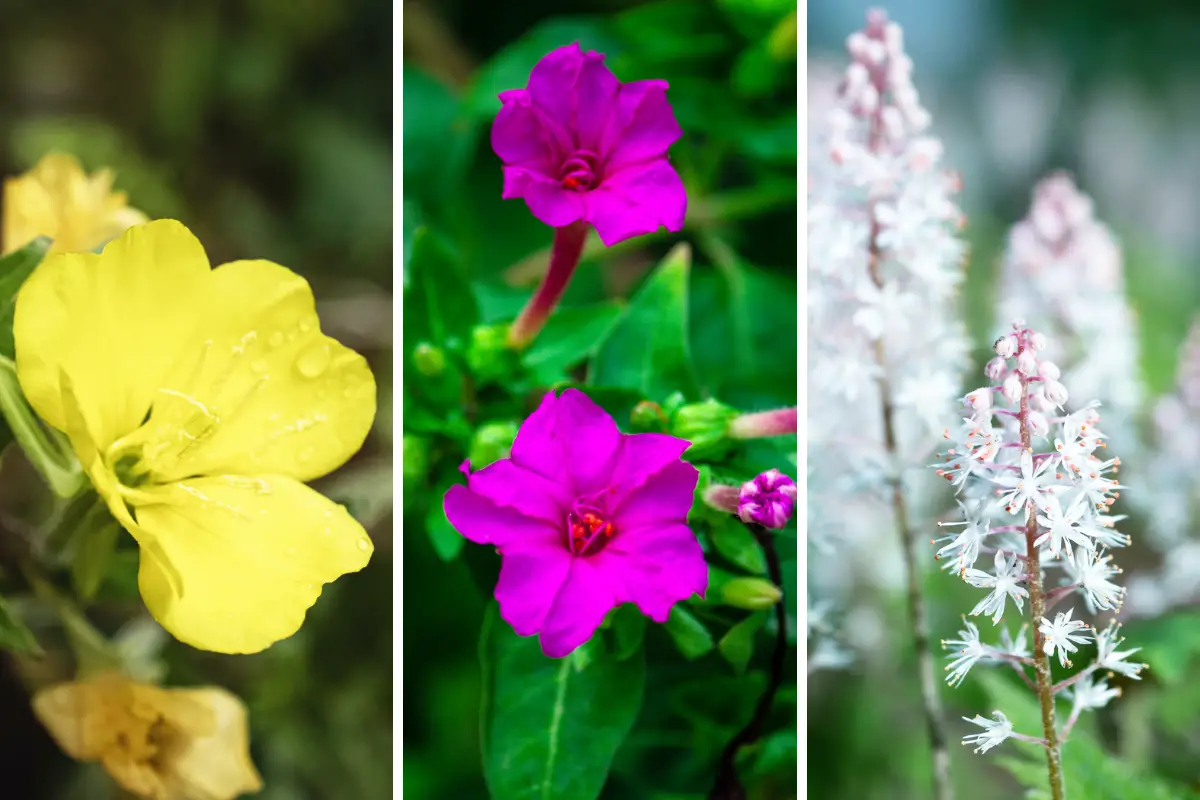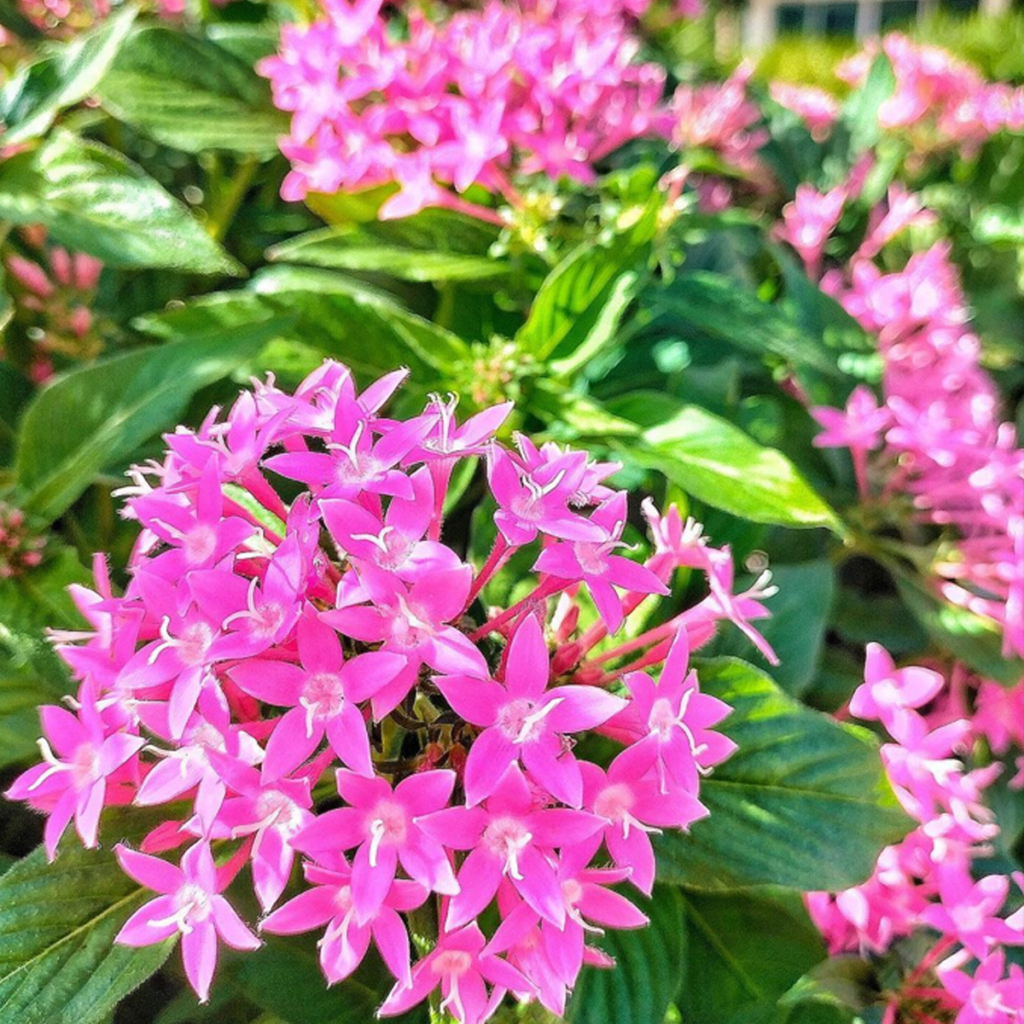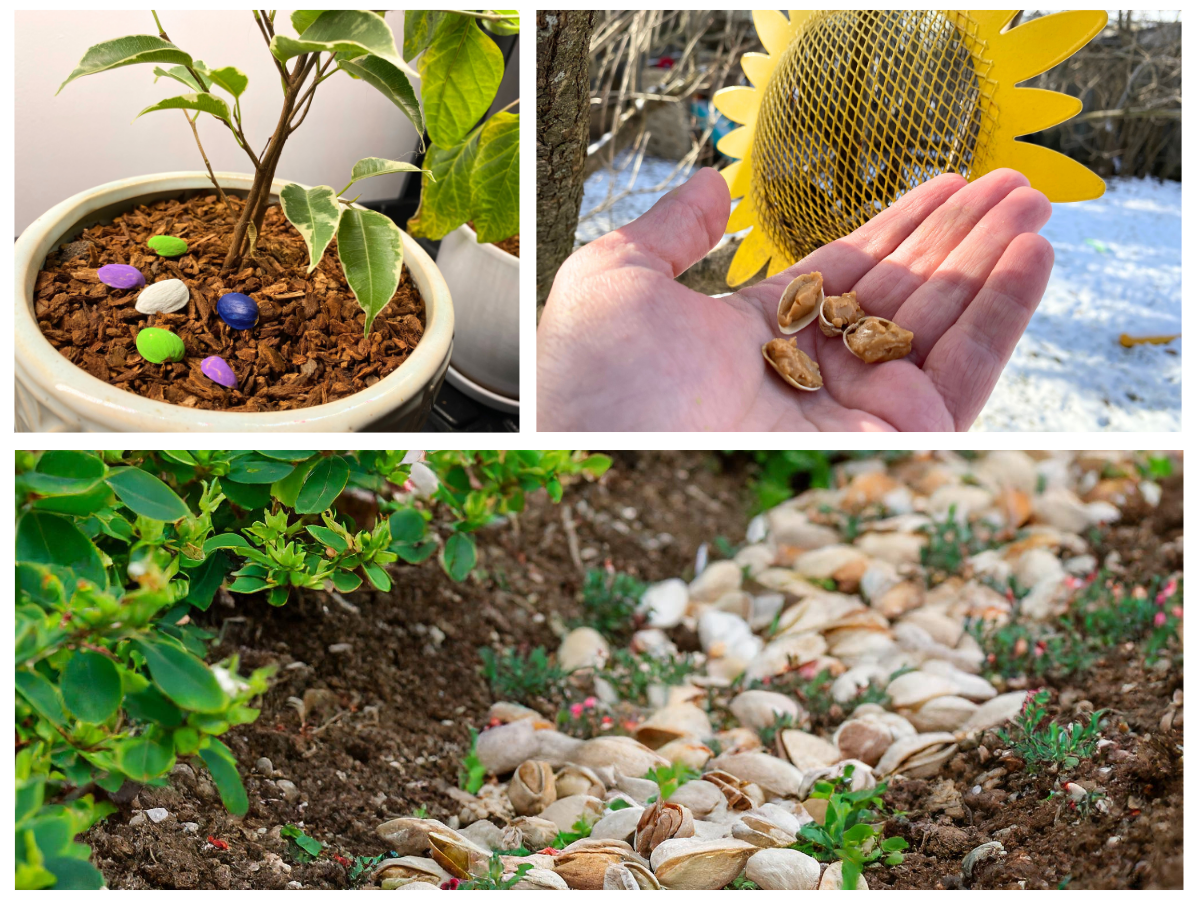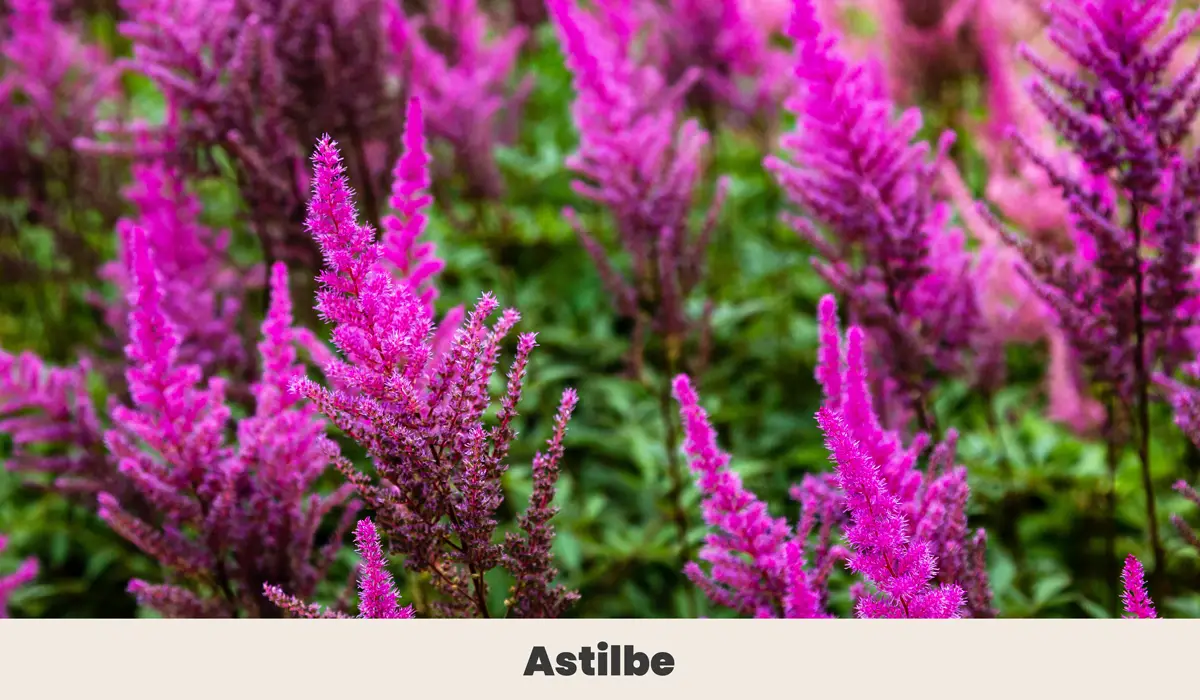The Hidden Benefits of Night Blooming Flowers In Your Garden

Glowing blooms, fragrant in the darkness of the night, are one of cool summer evenings’ great pleasures. There’s nothing like the secret sweetness of flowers that only emerge at night, drawing the creatures of the night by the power of their lush perfumes.

If you’re a night hawk like me you don’t need convincing to spend more time in the garden at dusk. Even if late nights aren’t your cup of tea adding night-blooming flowers will add a unique benefit to your garden. Adding even just a few of the flowers I’ve listed below will invite hummingbirds and other marvelous pollinators that prefer to feed at dawn and dusk.
Quickly find flowers that open at night:
1. Casa Blanca Lily

Lilies exude an easy charm, an elegant classic that no garden should be without. The Casa Blanca Lily brings its enduring grace to the night garden, with radiant white blooms dripping heavy fragrance. Cat lovers beware, however. Casa Blanca is a true lily, making it toxic to cats.
How to Grow:
- Botanical Name: Lilium ‘Casa Blanca’
- USDA Hardiness Zone: 5 to 8
- Blooming Period: Summer
- Where to Plant: Free draining clay or sandy soils, likes full sun to partial shade.
- Care Tips: Amend the soil with good compost prior to planting.
2. Datura

The witchy and wonderful datura is a captivating dream, with pale trumpet-shaped blooms that erupt in a twisting upright spiral. Indigenous people across the Americas employed them in traditional medicine to induce visions, among other uses. For the home gardener, their enduring and powerfully perfumed blooms are enchantment enough.
How to Grow:
- Botanical Name: Datura wrightii
- USDA Hardiness Zone: 9 to 11
- Blooming Period: Spring to fall
- Where to Plant: Prefers full sun and thrives in most soils. Drought tolerant.
- Care Tips: Toxic, causes skin irritation.
3. Evening Primrose

The evening primrose flower produces glorious golden buds that open each evening in the late afternoon, destined to wither by dawn. They’ve become quite popular in the herbal medicine trade as a tonic of youth. Personally, I feel rejuvenated enough walking among their blossoms.
How to Grow:
- Botanical Name: Oenothera biennis
- USDA Hardiness Zone: 4 to 9
- Blooming Period:Late spring to early fall
- Where to Plant: Rocky and sandy soils with good drainage. Full sun to partial shade is best.
- Care Tips: Thrives in poor quality, disturbed soil. A great choice for path edging and gap filling.
4. Foamflower

Frothy and fine, the foam flower is an American native that’s a snap to grow. They’re pest and disease-resistant, and like many night natives serve as an important food source for sphinx moths and other valuable pollinators. They’re ideal for ecologically minded cottage gardens.
How to Grow:
- Botanical Name: Tiarella codifolia
- USDA Hardiness Zone: 4 to 9
- Blooming Period: Spring
- Where to Plant: Organically rich soils with good moisture. Prefers shade.
- Care Tips: Self-seeds and naturalizes readily.
5. Cape Jasmine

Gardenias are an enduring classic that brings old-world charm to any cottage garden. It’s a dedicated grower who puts in more than one, however, as they’re prone to disease and have fussy roots. The work pays off however once those milky flowers open – so sweet and strong it only takes a handful of blooms to transform the garden each evening.
How to Grow:
- Botanical Name: Gardenia jasminoides
- USDA Hardiness Zone: 7 to 11
- Blooming Period: Spring to summer
- Where to Plant: Organically rich, acidic soils with partial shade and good moisture.
- Care Tips: Fertilize with acidic organic solution in early spring. A second dose in late summer will prompt a second flush of blooms.
6. Marvel of Peru (Four O’Clocks)

Also known as Four O’clocks, the Marvel of Peru is a cheerful little blossom in a variety of colors known for how reliably it opens. Their sweet demeanor hides a voracious ability to spread, as they self-seed easily and sprawl to fill whatever space you give them. Personally, I prefer to keep all that vigor in containers.
How to Grow:
- Botanical Name: Mirabilis jalapa
- USDA Hardiness Zone: 7 to 10
- Blooming Period: Summer to fall.
- Where to Plant: Any brightly lit patch of your garden will do – will thrive in most soils.
- Care Tips: Feed monthly in the growing season with balanced liquid fertilizer for abundant blooms.
7. Moonflower

Also known as White Morning Glory, the moonflower lives up to its name with glorious pale blooms that unfurl with remarkable speed each evening. Like all Morning Glories, the moonflower is a fast-growing vine that can swallow entire structures with astonishing ease. It’s a low-maintenance choice for dry patches or full sun arbors and archways.
How to Grow:
- Botanical Name: Ipomoea alba
- USDA Hardiness Zone: 10 to 12
- Blooming Period: Summer to fall
- Where to Plant: Dry, well lit areas. Thrives in most soil types.
- Care Tips: Flowers and leaves contain toxic compounds, wear gloves when pruning.
8. Night Blooming Cereus (Orchid Cactus)

The Night Blooming Cereus is an easy-care epiphyte, a plant that grows without soil on tree trucks, rock faces or other structures. Like many cacti, they only open their flowers in the cool of the night. They enjoy lower light and more water than most cacti, making them a great option for habitual cactus killers.
How to Grow:
- Botanical Name: Ephiphyllum oxypetalum
- USDA Hardiness Zone: 10 to 12
- Blooming Period: Spring to summer
- Where to Plant: Loose, sandy soils in full sun to partial shade.
- Care Tips: Can be grown on boards or without soil entirely.
9. Night Blooming Jasmine (Lady of the Night)

So powerful is the fragrance of Night Blooming Jasmine that a single vigorous specimen can perfume a whole neighborhood. It’s a tough, fast-growing shrub that puts up with most soil types and light levels while still pumping out thick clusters of bright blooms.
How to Grow:
- Botanical Name: Cestrum nocturnum
- USDA Hardiness Zone: 9 to 11
- Blooming Period: Year-round
- Where to Plant: Full sun to partial shade, tolerates most soil types.
- Care Tips: Highly toxic to browsers.
10. Night Flowering Tobacco

Night flowering tobacco is a compact plant that naturalizes readily, self-seeds well and produces a knockout display of blooms almost year-round. Its fragrance is reliable and pleasing, not as overwhelming as many on this list but a simple scent that turns basic garden borders into pure evening delight.
How to Grow:
- Botanical Name: Nicotiana sylvestris
- USDA Hardiness Zone:10 to 11
- Blooming Period: Spring to fall
- Where to Plant: Prefers moist, organically rich soil. Full sun to partial shade.
- Care Tips: Will do best with regular fertilization during the growing season.
11. Tuberose

The scent of tuberose flowers is a popular choice for perfumes and cosmetics and for good reason. It’s sweet and subtle, generous without becoming overwhelming, and completely charming. Growing tuberose ensures your summer nights are never without it. It’ll grow just fine in containers, ideal for perfuming patios in summer and pretty up living spaces come fall.
How to Grow:
- Botanical Name: Polianthes tuberosa
- USDA Hardiness Zone: 7 to 10
- Blooming Period: Summer to fall
- Where to Plant: Organically rich soils. Prefers full sun to partial shade.
- Care Tips: Does well in containers when fertilized regularly.
Before you go!
Night-blooming flowers enhance the majesty and magic of the night. Radiant pale blooms and rich fragrances enchant and beckon us out to enjoy our gardens all year round. The sear of summer days gives way to sweet scents and seductive blooms, a relaxing end to any day. If you were inspired by the flowers I’ve listed here, I think you might like to read these next:
Summer Blooming Flowers
Fall Blooming Flowers
White Perennial Flowers




